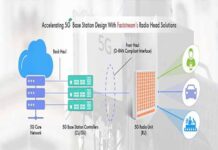The global lithium iron phosphate battery market size is expected to reach USD 15.09 Billion in 2030 and register a revenue CAGR of 5.3% over the forecast period, according to latest report by Reports and Data. High demand for lithium iron phosphate batteries in energy storage devices is expected to drive market revenue growth during the forecast period.
Manufacturers are now focusing majorly on enhanced strategies for specific requirements and technological progress to decrease operating expenses and increase productivity of lithium-iron-phosphate batteries. High demand for these batteries in the automotive, power, and industrial sectors encourages manufacturers to upgrade and increase productivity of LFP batteries. Governments of various countries across the globe also have taken supportive initiatives towards expansion of lithium iron phosphate batteries. For example, the Government of India developed indigenous technology for production of lithium iron phosphate cathode material at its Center for Nanomaterials. Increasing productivity and technological advancements of LFP batteries are expected to drive market revenue growth during the forecast period.
Manufacturers are now focusing majorly on enhanced strategies for specific requirements and technological progress to decrease operating expenses and increase productivity of lithium-iron-phosphate batteries. High demand for these batteries in the automotive, power, and industrial sectors encourages manufacturers to upgrade and increase productivity of LFP batteries. Governments of various countries across the globe also have taken supportive initiatives towards expansion of lithium iron phosphate batteries. For example, the Government of India developed indigenous technology for production of lithium iron phosphate cathode material at its Center for Nanomaterials. Increasing productivity and technological advancements of LFP batteries are expected to drive market revenue growth during the forecast period.
Implementing stringent government regulations to monitor and control rising pollution levels encourages businesses to use LFP batteries. Power generation organizations are now working towards producing renewable energy and storing it for future. Low self-discharge rate, low price, and minimal installation area are crucial elements driving adoption of LFP batteries in grids and energy storage devices. In addition, these batteries are more resistant to high temperatures and ideal for thermal control applications, which is expected to increase demand for LFP batteries.
However, rising demand for other batteries such as sodium-nickel chloride batteries, lead-acid batteries, lithium-air batteries, and flow batteries in energy storage systems, electric vehicles, and consumer electronics are expected to inhibit the lithium iron phosphate battery market revenue growth during the forecast period. In addition, higher up-front costs and low reserve capacity are also restraining factors for LFP batteries market.
Some Key Highlights from the Report
- The 16,251–50,000 mAh segment is expected to expand at a steady CAGR over the forecast period due to rising demand for these batteries from various sectors such as power, industrial, automobiles, and others. Fast-charging capacity and low cost of these batteries are main reasons behind that, which is expected to drive revenue growth of the segment during the forecast period.
- Power generation segment is expected to expand at a significantly faster CAGR over the forecast period due to rising adoption of lithium iron phosphate batteries in this segment. Most devices for power generation use LFP batteries due to their high energy density, high voltage operation, high efficiency, and longer lifetime.
- Europe is expected to register a steady revenue CAGR over the forecast period due to increasing government initiatives towards greenhouse gas emissions, which raises demand for LFP batteries in this region. Governments of Germany, France, and the U.K., among others set their target for zero-emission of CO2 by 2050, which is expected to increase demand for LFP batteries and drive market revenue growth in this region during the forecast period.
- Major companies in the global market report include K2 Energy Solutions, Inc., BYD Company Ltd., A123 Systems, LLC, Electric Vehicle Power System Technology Co., Ltd., RELiON Battery, LLC, OptimumNano Energy Co, Ltd., LiFeBATT, Inc., Lithium Werks B.V., Pihsiang Energy Technology Co., Ltd., Power-Sonic Corporation, Contemporary Amperex Technology Co., Limited, Benergy Tech Co. Ltd., KAYO Battery (Shenzhen) Company Limited, and Bestgo Battery Co., Ltd.
- On 18 February 2022, BYD Co Ltd and Uzavtosanoat JSC have signed a strategic Memorandum of Understanding (MOU) to develop, manufacture, and market New Energy Vehicles (NEV) in Uzbekistan. BYD and UzAuto look forward to working together to develop and manufacture sustainable and practical new energy vehicle solutions that are environmentally friendly while also excelling in safety, performance, and efficiency. This Memorandum of Understanding is at the heart of a new era of sustainable transportation, laying the groundwork for the mass deployment of new energy vehicles, which will be supported by efficient sales channels and after-sales services.















